HRCAM: the high resolution all-sky camera
HRCAM (High Resolution CAMera) is a digital SLR camera (Canon EOS 50D; 15 megapixels) equipped with a fish-eye lens (Sigma 4.5-mm f/2.8) for all-sky coverage on a 1.6 crop sensor. It was first installed in PLATO at Dome A during January 2010. It operated throughout 2010, 2013, most of 2014, and is running in 2015. HRCAM takes images of the sky above Dome A every 15 minutes for the purpose of determining the cloud cover, sky brightness, sky transparency, and aurora distribution. It is complimentary in many ways to the original Gattini experiment, although it doesn't employ the accurately known astronomical filters that Gattini used, nor can it see as deeply. On the positive side it is capable of imaging clouds when the sun is up.
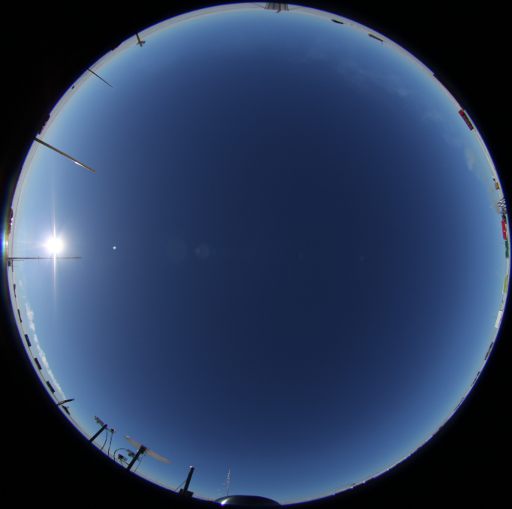
An HRCAM image taken on 27 January 2010, just as the Chinese expedition was leaving Dome A. You can see a tractor and five or so sleds at bottom left. The "clouds" at bottom left and top right are tractor exhausts. Snodar is visible at the top, various aerials and towers are visible on the left. The image reaches the horizon in all directions.
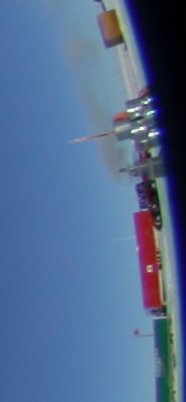 An enlargement of one section of the above image, demonstrating the excellent resolution of the camera and lens, even at the extreme edge of the field.
An enlargement of one section of the above image, demonstrating the excellent resolution of the camera and lens, even at the extreme edge of the field.
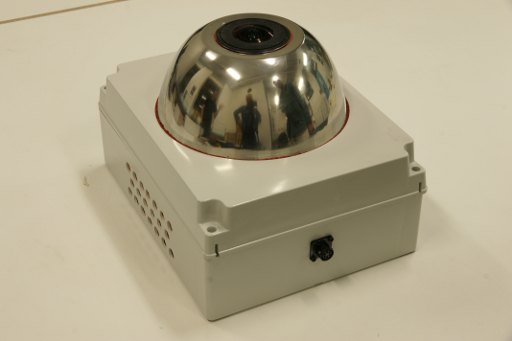
The HRCAM instrument. The fish-eye lens is flush with the top, and does not have a window. The reflective metal cover (an IKEA salad bowl) is designed to shed snow, and have low emissivity so that it can be heated efficiently. The holes on the bottom left are for a dehumidifying system. The single Milspec connector provides 24VDC power and a 100Mbps LAN connection. The enclosure includes an ARM-based computer running Linux. The camera is controlled via a USB connection using gphoto2. The instrument is designed to operate down to -80C. The raw images are stored on hard disks inside PLATO-A. Exposure times vary from 1/2000th of a second to 120 seconds depending on the sky brightness, and are automatically set by the software based on an analysis of the previous exposure. Thumbnail images (20kB in size) are sent back via PLATO-A's Iridium satellite link. We can use the raw images to extract quantitative information on sky brightness in the three camera filters.
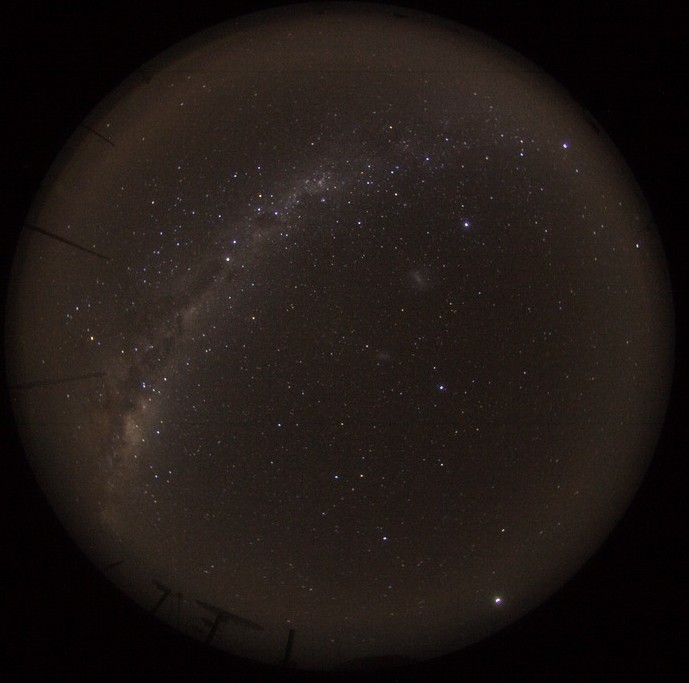
An HRCAM image of the stars. The Milky Way, Southern Cross, Coal Sack, and Magellanic Clouds, are clearly visible. The bright object near the horizon at the lower right is Jupiter.
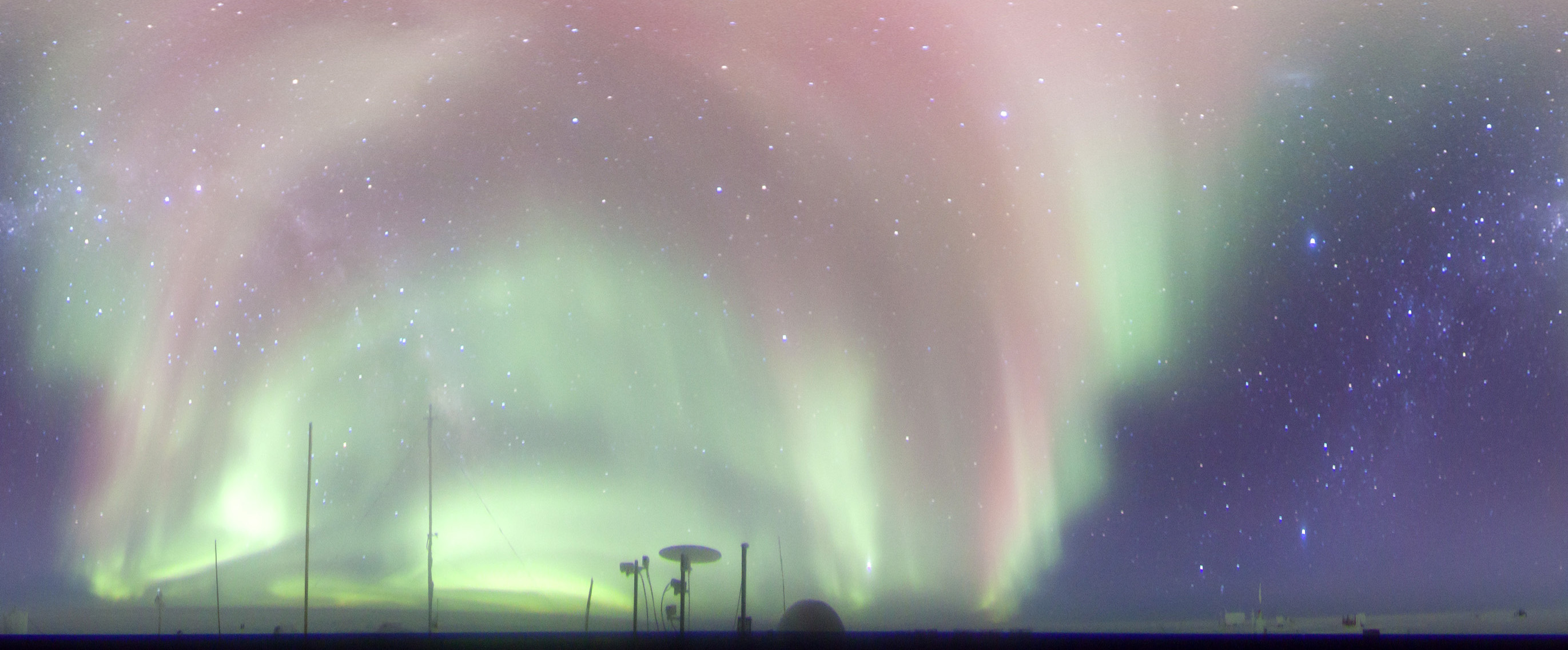
An HRCAM image of a bright aurora, unwrapped from the fish-eye view.
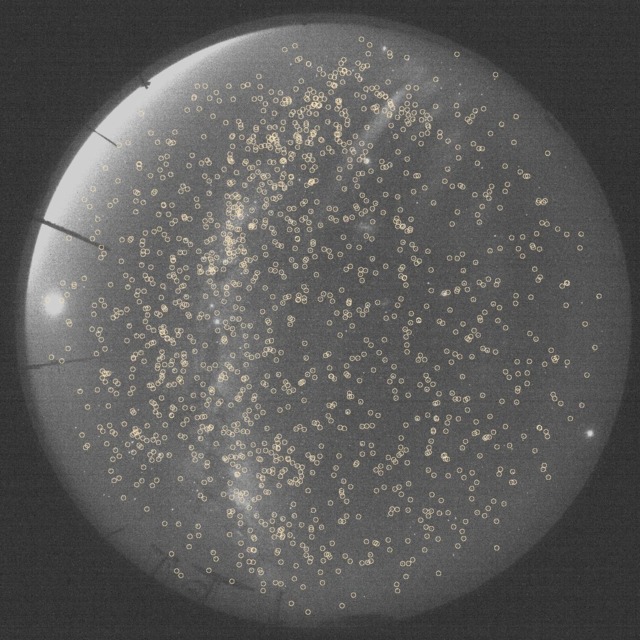
Tycho standard stars identified on an HRCAM image by a computer program. For details of the astrometry techniques used, see this PDF.
Conference proceedings on HRCAM
- Sims, G., Ashley, M. C. B., Cui, X., Feng, L. L., Gong, X., Hu, Z., Lawrence, J. S., Luong-Van, D. M., Shang, Z., Storey, J. W. V., Tothill, N., Wang, L., Yang, H., Yang, J., Zhou, X., Zhu, Z., 2013, First look at HRCAM images from Dome A, Antarctica, IAU Symposium, 288, 38–41.
Contacts
Primary designer: Daniel Luong-Van
Principal Investigators: Daniel Luong-Van and Michael Ashley
Participating institutions in alphabetical order
 |
University of New South Wales, Australia |
